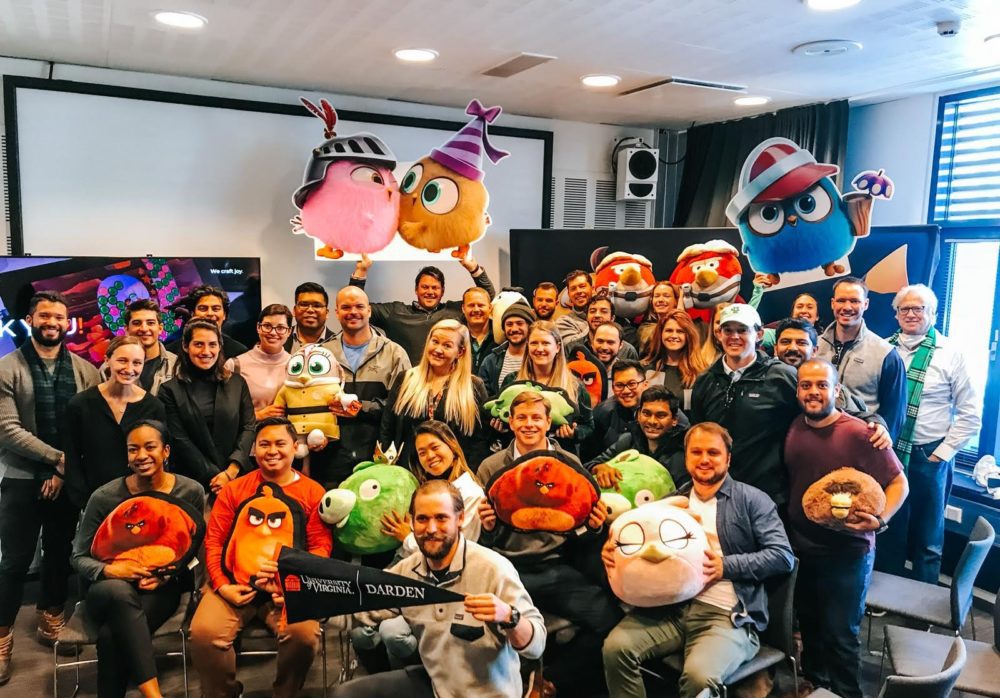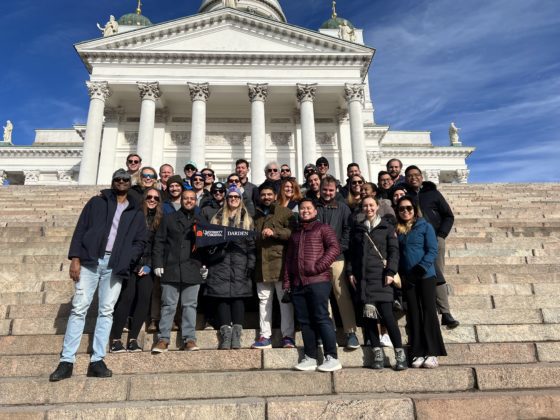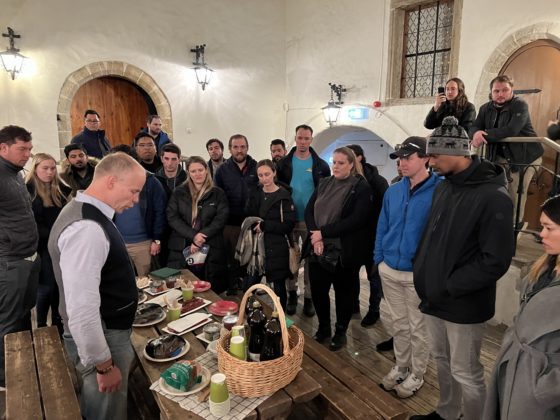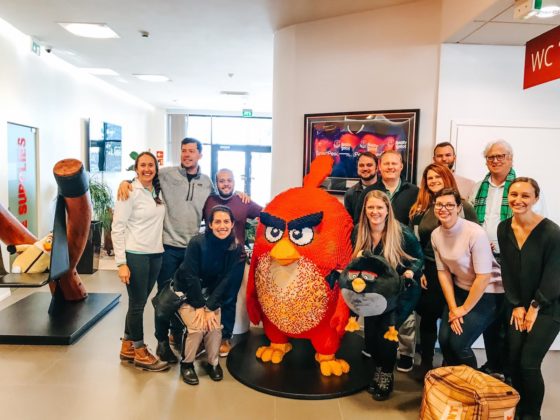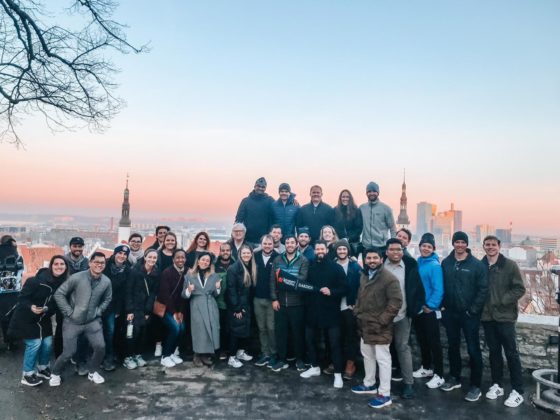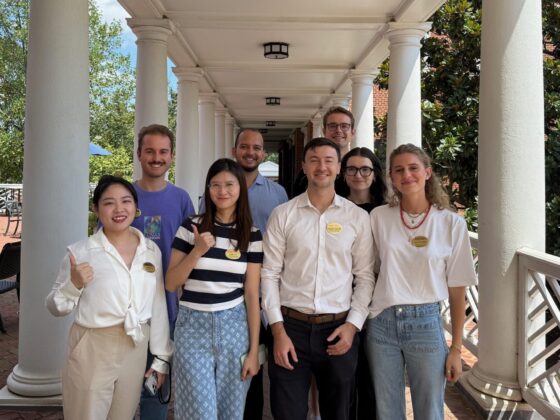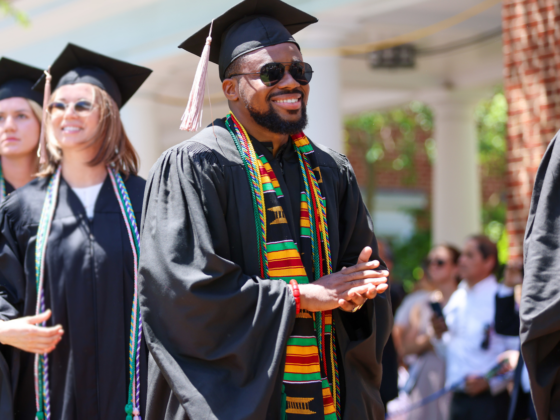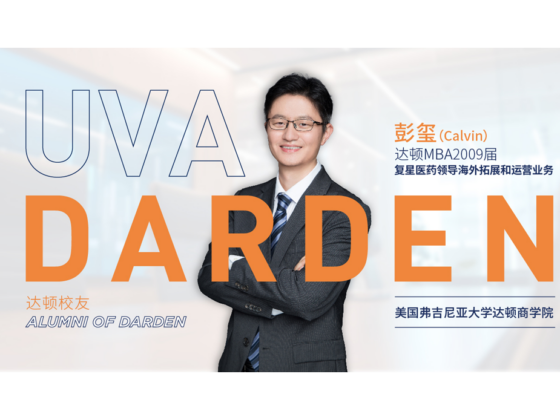Alvint Sheth (Class of 2022) is a current MBA student with ties to both Malaysia and Singapore. Outside of classes, Alvint likes to explore Charlottesville with his wife and daughter, lift weights, play soccer and attend as many Darden events as possible. Alvint interned with BCG over the summer and is planning on returning after graduation as a consultant. Alvint recently completed a Darden Worldwide Course in Finland and Estonia. He shared a little about his experience with the Center for Global Initiatives. In his own words:
Tell us about yourself Alvint? Why did you choose to go on a DWC to Finland/Estonia?
Hello! I am a second year in the residential MBA program at UVA Darden School of Business. My wife, Nital Timbadia and I are proud parents of Miraya Neysa Sheth, age 3. I am a mechanical engineer by trade and worked as a service engineer for Cummins Inc. for 7.5 years before Darden. When I graduated from Purdue University, I really wanted a role where I could travel the world, interact with customers, and solve technical/engineering problems. I was able to find that role where I helped launch Cummins’ brand-new flagship diesel engine and generator. This required me to spend months away from home and travel to countries like Saudi Arabia, Pakistan, U.A.E., Turkey, Namibia, etc. When I started my MBA at 31, I had traveled to 31 countries either for work or fun. But who I am is a direct result of my upbringing and sheds light on why I chose the Finland/Estonia DWC.
Born in Kuala Lumpur, Malaysia, I was fortunate to be exposed to travel early on in my life. My family moved to Singapore when I was 3. Business was good and hard work enabled my parents to afford exotic vacations to destinations like Egypt, Tanzania, Kenya, and South Africa amongst others. Even when things financially took a turn for the worse and we were forced to move back to Malaysia when I was 13, the explorations continued. Our travels were more local and economical with long drives to Thailand and short, inexpensive flights to Southeast Asian countries like Cambodia and Indonesia. Travel was our escape as a family (pun intended) and it is almost hard-wired in our DNA. Then begs the question, why Finland and Estonia versus the other cool DWC locations that I haven’t been to such as Italy or Costa Rica, or even Alaska? It’s quite simple actually.
From the list of all the DWC destinations, I ranked countries from least likely to most likely I’d travel to for fun, and Estonia (less so Finland) emerged on top. I had a couple of close friends at Darden who I wanted to travel with and they had the same thought process which made our rankings easy to match. We even chose to do a third new country/city together and traveled to Budapest, Hungary before DWC. With the benefit of hindsight, almost all the people who ended up on the Finland/Estonia DWC had similar mindsets which made for a very cohesive, memorable course despite not knowing each other as well during COVID-19/hybrid learning period! Post-Darden, I will be headed into the consulting industry where I am excited to go back to traveling, interacting with customers, but solving business problems this time instead!
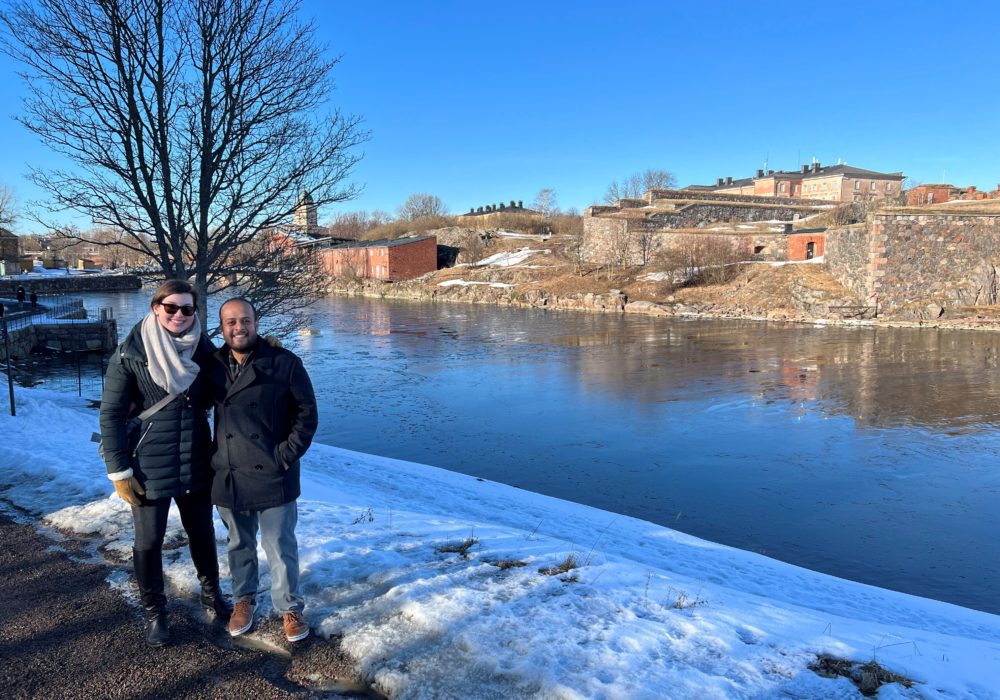
How does the business in Finland and/or Estonia differ from America?
Well, that’s a loaded question! To keep it very high level, let’s focus on differences I have observed at the Federal/State Level, and at a Business/Company Level.
Starting at the Federal/State Level, Finland has been ranked as the happiest country in the world. Speaking to the local tour guide, this is because of the trust, security, and safety achieved by the country and government. There is high transparency (in the city and government), a stable society, and low corruption that builds trust in the public. High social taxes allow for free healthcare, free education up to Ph.D. level, child care payments, and generous parental leave building social and job security. In Finland, mothers get 1 year of 70-80% paid maternity leave and partial pay for 2 more years. Additionally, employers have to hold a position for them. In Estonia, parents get 1.5 years of parental leave with 100% pay from the government, and another 1.5 years of unpaid leave. In comparison, the US has free public-school education only up to high school. Public and private universities in the US cost anywhere between $20k-$80k per year and students without scholarships can rack up a sizeable debt before they even start working. Healthcare in the US is very expensive especially if you do not have insurance and parental leave ranges anywhere from 6-16 weeks only. However, the US has a higher median salary of 5000 euros per month while the Finland and Estonian median salaries are a lot lower, at 3k and 1.5k euros per month respectively. These factors tie into talent attraction and retention.
At the Business/Company Level, there are lower barriers of entry to set up a company in Finland and Estonia. Opening a company in Finland only takes a couple of weeks. The process is made very convenient with the International House Helsinki – a place where newcomers can get their paperwork sorted out, talk to service counselors, receive help on immigration procedures, work, housing, education, leisure activities, etc. There is also a very low cost to set up a new company including no minimum capital needed, very low trade registrar fees, auditors fees, etc. Beyond that, there are funding opportunities and incentive subsidies available for foreign-owned companies registered in Finland such as double tax depreciation of new machinery/equipment investments and a 150% tax deduction for R&D projects. Similarly in Estonia, which has the highest start-up ratio per capita in the world, setting up a company only takes 10 minutes and can be done completely online. Starting capital needed is only 2500 euros which can be paid at any time and one can reinvest the company’s profits in Estonia investments without paying any corporate tax. According to healyconsultants.com, starting a company in the US can cost between $7-9k and take 9-11 weeks. These differences drive the entrepreneurship and foreign direct investment culture within Finland and Estonia.
How will you incorporate your learning experiences from this program into your future endeavors?
To keep it brief, I found 3 things to keep in mind as I head into my career post-Darden…
1- Know your audience (and culture)
There is a different growth mindset in Finland and Estonia. While speaking to locals, one shared that Finland is not the place one comes to be a millionaire. One main example was the owner of the Sauna company sharing how he was focused on micro and experiential entrepreneurship instead of growing his company more which is a vast departure from growth-centric US companies.
2- One size (or strategy) does not fit all
Talent attraction to Finland and Estonia may need a different strategy than how US companies would traditionally approach it. The median salaries in Finland and Estonia are significantly lower than in the US, and there is a different mindset about how compensation and incentives are viewed in the region given all the other social benefits and the big focus on work-life balance.
3- Don’t judge a book by its cover
Finland wasn’t top of mind for me when I thought of a business hub but Helsinki is globally connected due to its location within Europe – ~9 hours from New York, ~11.5 hours from Singapore, ~6 hours from Dubai, etc. Finland can be a central meeting point even for US-based companies with an international presence. Finland as a gateway between east and west has 500M consumers within easy reach!
What unexpected insight did you gain from these experiences in Finland/Estonia? Were there any lessons learned that were particularly inspiring?
Yes! How about one inspiring insight per country?
Finns have a great mindset about life in general. In a presentation during DWC, I learned that they live by the word “Sisu”. It means the unwavering strength to keep going when the going gets tough; grit; perseverance; is regarded as an integral part of Finnish culture. Beyond the great social benefits that promote work-life balance and the great health benefits from the Sauna culture, I believe this mindset is a key ingredient that helps rank Finland the happiest country in the world!
Estonia needs efficiency in its small population to develop and digitize its economy. There is great competition for high-skilled labor in the region, especially with Finland neighboring and competing for the same. To help with this, I learned that Estonia overhauled the education system to not get left behind in the tech boom, making 12-year-olds learn HTML coding language. As they say, necessity is the mother of invention and I find this level of grassroots problem-solving inspiring.
Do you have any advice for first-year students who may be contemplating a DWC?
First, definitely take advantage of this incredible DWC opportunity to immerse in a new culture, and connect at a deeper level/make memories with your classmates, Darden faculty, and staff. But more importantly, I recommend choosing a country that makes you nervous or that you would not travel to otherwise. Lean into this uncertainty and discomfort knowing you are surrounded by the brightest, most caring people, who are also there to learn as much as possible. This can only yield a positive outcome and grow you as a person.

